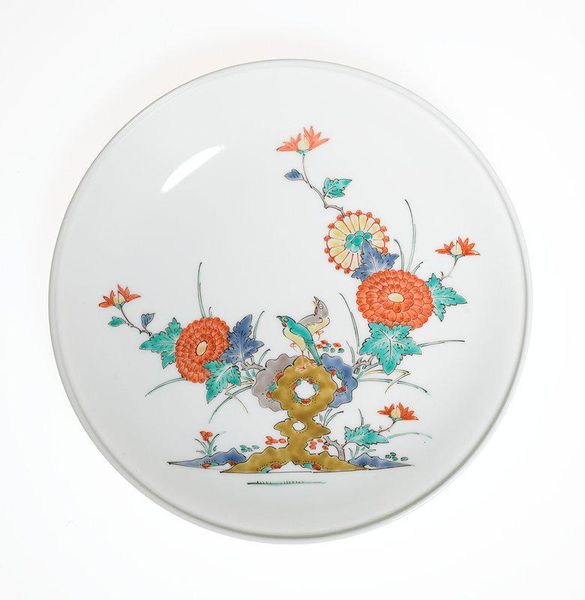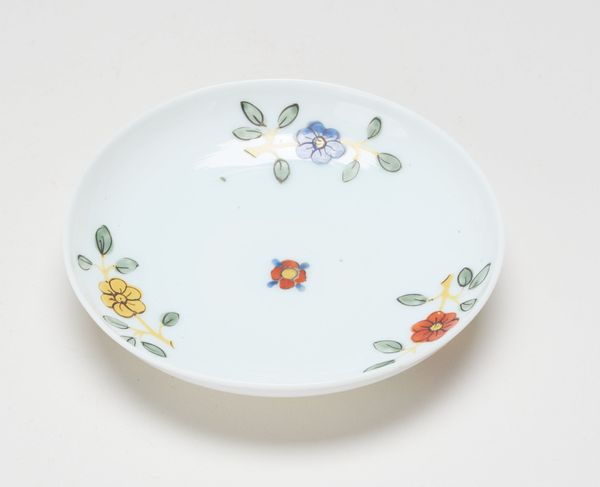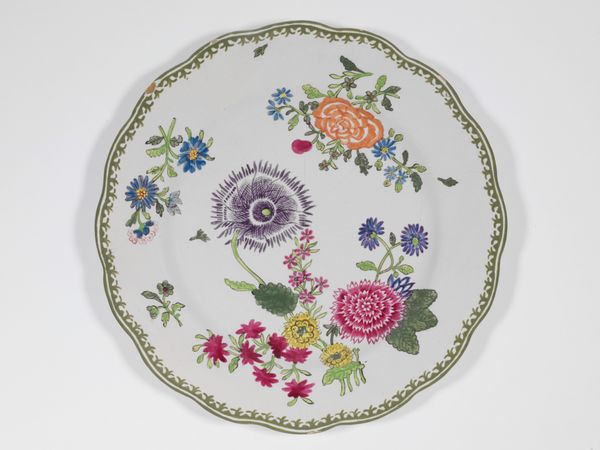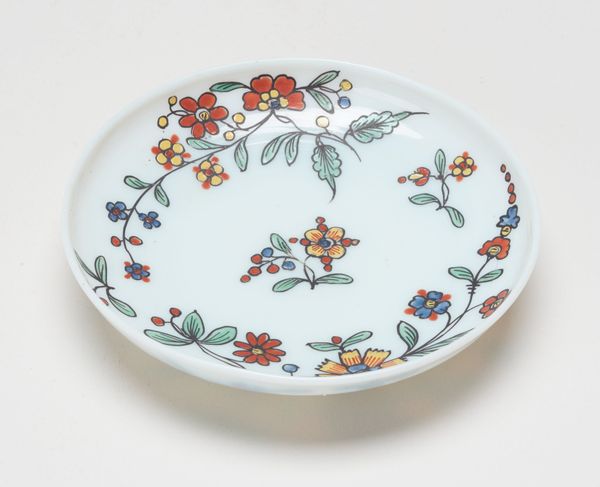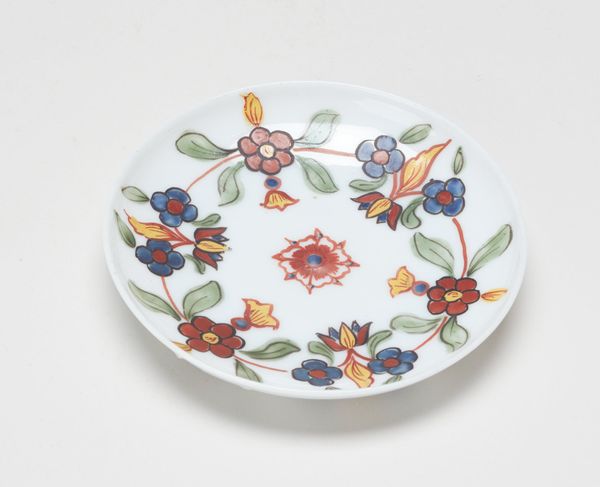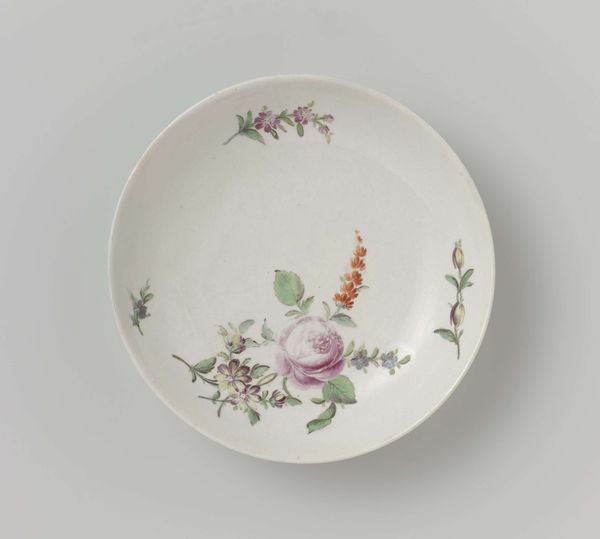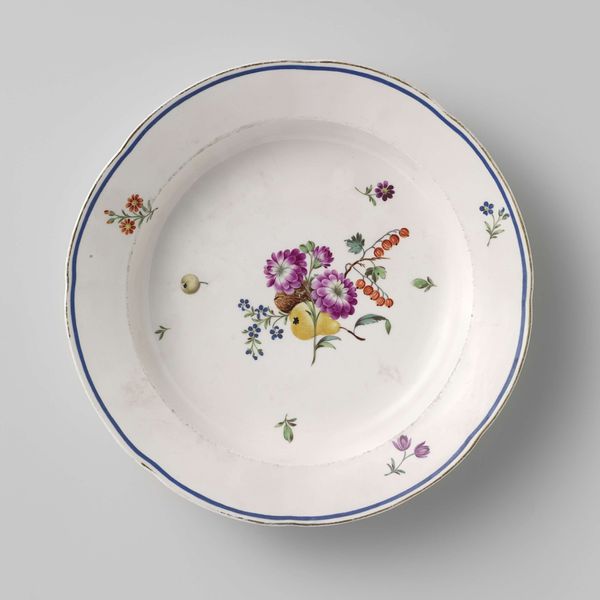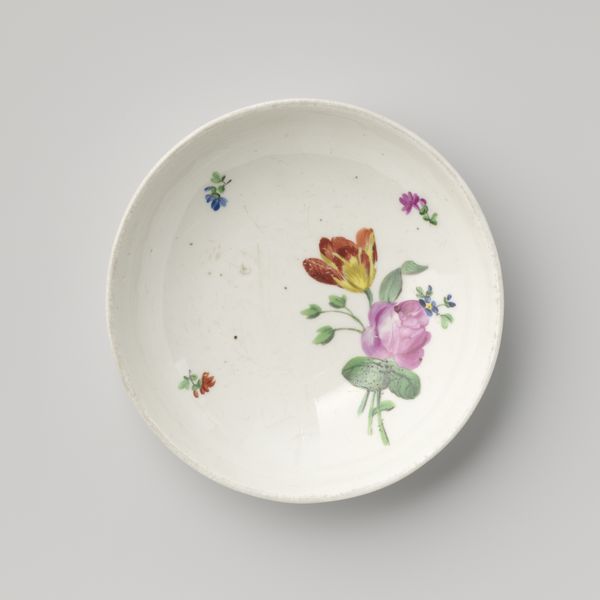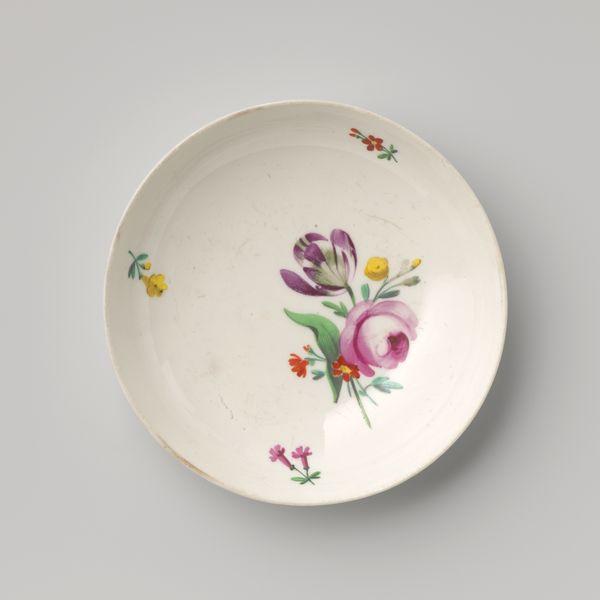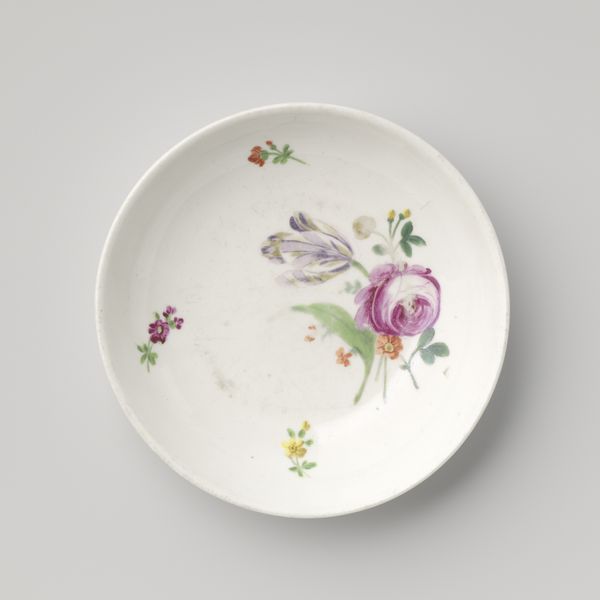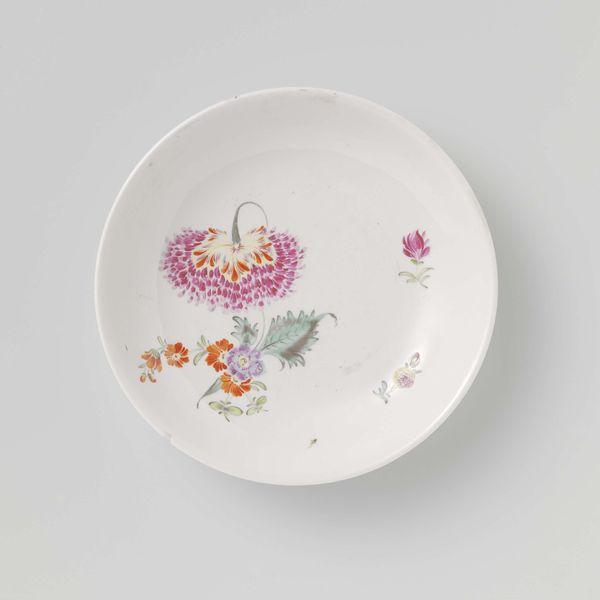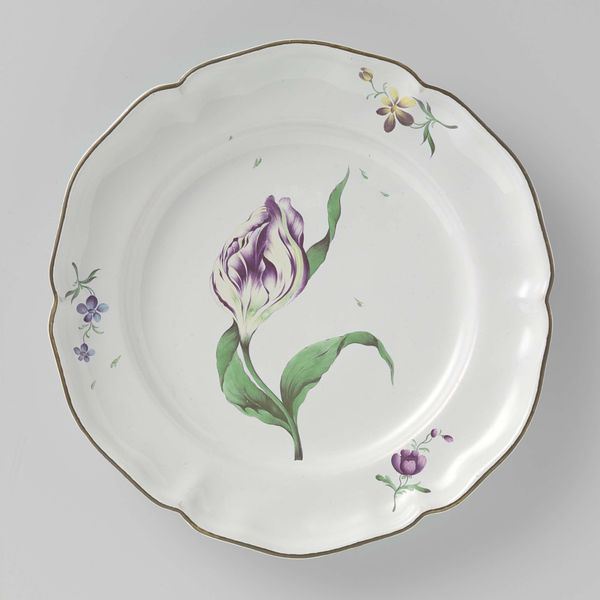
ceramic
#
circular oval feature
#
naturalistic pattern
#
cake food
#
asian-art
#
ceramic
#
japan
#
pattern background
#
ethnic pattern
#
organic pattern
#
flower pattern
#
regular pattern
#
pattern repetition
#
decorative-art
#
layered pattern
Dimensions: 1 3/4 x 11 x 11 in. (4.45 x 27.94 x 27.94 cm)
Copyright: No Known Copyright
Curator: Well, hello! Take a moment to look at this intriguing plate. It's attributed to Sakaida Kakiemon XIV, dating from the 20th century and currently residing here at the Minneapolis Institute of Art. Editor: It's like a delicate dance of blossoms frozen in time. Makes me feel a quiet kind of joy. So clean, almost sparse, yet vibrant. Curator: Exactly! We should consider that this “sparseness” is intentional. The porcelain would be sourced and carefully chosen. Then decorated by highly trained artisans. Kakiemon porcelain in particular is associated with refined asymmetrical designs, placing great importance on negative space. Editor: It’s funny you mention the space around the flowers...It breathes, doesn't it? Each bloom feels like a single word in a short, elegant poem. But that bronze rim – is that just for framing, or does it play a larger role? Curator: The rim is functional, adding durability, of course. But you are correct, the metal rim visually contrasts with the ceramic and the enameled floral decoration to enhance the design. The application of contrasting material represents considerable workshop processes. Editor: So, it's not just about aesthetic harmony but also a meeting point of different crafts, even materials? What were these plates actually *for*? Just decoration, or were they used? Curator: A complex question! Kakiemon ware served both practical and aesthetic roles. Think about elite households, the ritual of dining, or presenting gifts. It wasn't *just* utilitarian but about signaling status and refinement through objects crafted with considerable labor. Editor: And when we look at it now, removed from its original context, it makes us stop and see beauty in the everyday. To see even the most commonplace domestic object as an artwork. Curator: Yes, its journey across time and cultures underscores shifts in how we assign value. We’re contemplating the confluence of craft, culture, consumption and artistry. It gives me plenty to think about! Editor: Me too, a simple plate holding so much… perhaps the humblest objects carry the biggest stories after all.
Comments
No comments
Be the first to comment and join the conversation on the ultimate creative platform.
